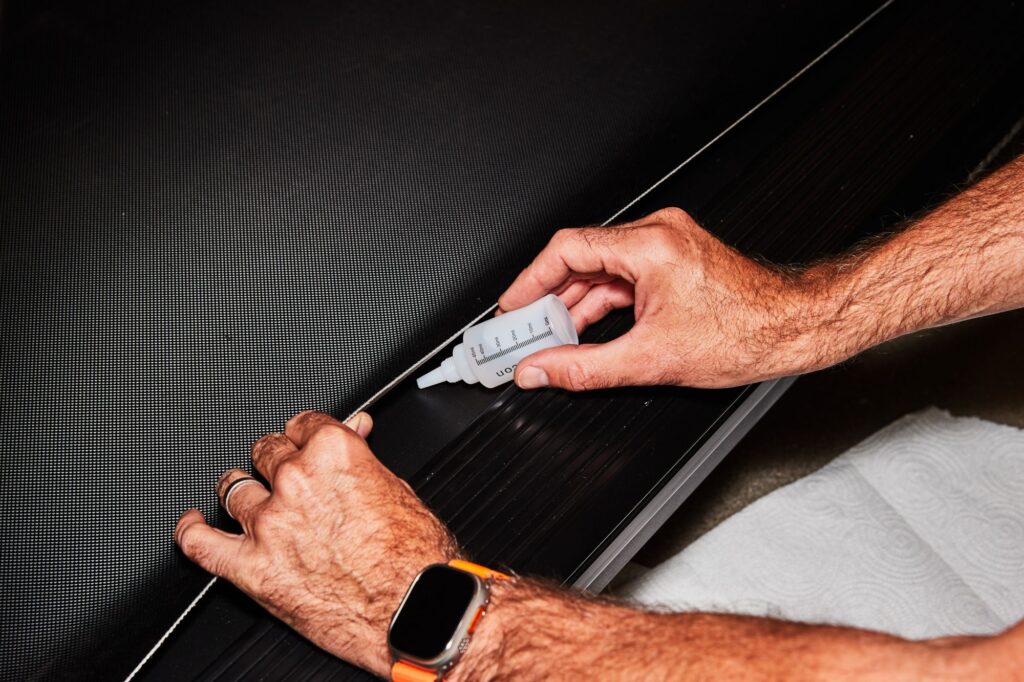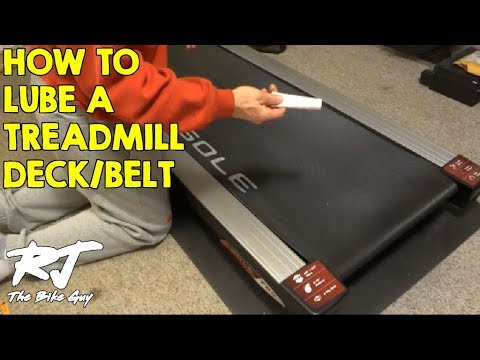Keeping your treadmill in optimal running condition is essential for a smooth and effective workout. One important maintenance task that often gets overlooked is lubricating the treadmill. In this informative article, we will guide you through the step-by-step process of how to properly lubricate your treadmill, ensuring that it stays in great shape for years to come. Whether you’re a seasoned fitness enthusiast or just starting out on your fitness journey, this article from Fit Gear Gurus will provide you with the knowledge and guidance you need to keep your treadmill running smoothly and efficiently. Get ready to learn the secrets to maximizing the lifespan of your treadmill with our easy-to-follow instructions.
How to Lube a Treadmill

This image is property of hips.hearstapps.com.
Why Lubrication is Important for a Treadmill
When it comes to keeping your treadmill running smoothly and efficiently, proper lubrication is key. Lubrication helps reduce friction between the treadmill belt and deck, which can prevent wear and tear on the machine and extend its lifespan. It also ensures a quieter and more comfortable workout experience by reducing noise and vibrations. Without regular lubrication, your treadmill may become sluggish, squeaky, and may even damage itself over time. Therefore, it is essential to understand how to properly lubricate your treadmill to maintain its functionality and performance.
When to Lubricate a Treadmill
Knowing when to lubricate your treadmill is crucial for maintaining its optimal performance. As a general rule of thumb, a treadmill should be lubricated every 6 to 12 months or after 150 hours of use, depending on the manufacturer’s recommendation. However, if you notice any signs of friction, such as a squeaky or sticky belt, it is advisable to lubricate your treadmill right away. It’s always better to be proactive and prevent any potential issues rather than waiting for them to arise.
Choosing the Right Lubricant
Selecting the appropriate lubricant for your treadmill is equally important. The type of lubricant you choose will depend on the type of treadmill you own. Most treadmills require a silicone-based lubricant, as it offers excellent lubrication properties, is long-lasting, and does not attract dust or dirt. Avoid using petroleum-based lubricants as they can damage the treadmill belt and deck.
To determine the best lubricant for your specific treadmill model, it is recommended to consult your treadmill’s user manual or contact the manufacturer for guidance. They will provide specific recommendations and ensure you choose a lubricant that is compatible with your treadmill.
Preparing for Lubrication
Before you begin the lubrication process, it is essential to prepare your treadmill properly. Start by turning off the treadmill and unplugging it from the power source to avoid any accidents or injury. Next, ensure the area around the treadmill is clean and free from any debris or dust. Cleaning the treadmill belt and deck before lubrication can help remove any dirt or particles that may interfere with the lubricant’s effectiveness. Additionally, adjust the treadmill’s incline to the lowest setting, which will make the lubrication process easier and more efficient.

This image is property of i.ytimg.com.
Lubricating the Treadmill Belt
Now that you have prepared the treadmill, it’s time to lubricate the belt. Begin by locating the belt’s edges on either side of the treadmill deck. Lift the belt on one side and apply a small amount of lubricant directly on the underside of the belt, near the center. Move to the other side and repeat the process. Be sure to apply the lubricant evenly along the length of the belt. Avoid over-lubricating, as excess lubricant can create a mess and attract dirt. Once you have applied the lubricant, gently run the treadmill at a low speed for a few minutes to allow the lubricant to spread evenly across the belt.
Lubricating the Treadmill Deck
After lubricating the belt, the next step is to lubricate the treadmill deck. Lift the belt on one side and apply a small amount of lubricant directly to the deck surface. Repeat this process on the other side. It is essential to apply the lubricant evenly and avoid over-application. Once the lubricant is applied, gently lower the treadmill belt and center it on the deck. This will help distribute the lubricant and ensure smooth operation during your workout.

This image is property of hips.hearstapps.com.
Cleaning Excess Lubricant
While lubrication is crucial for the treadmill’s performance, excess lubricant can be messy and attract dirt and dust. After lubricating the treadmill belt and deck, take a clean cloth or towel and carefully wipe off any excess lubricant. Pay close attention to the edges and corners of the belt and deck, as these areas tend to accumulate more lubricant. Removing excess lubricant will not only keep your treadmill clean but also prevent any potential slipping accidents during your workout.
Testing the Treadmill After Lubrication
Once you have completed the lubrication process, it is essential to test the treadmill to ensure everything is functioning correctly. Begin by plugging the treadmill back into the power source. Start the treadmill at a slow speed and gradually increase the speed. Listen for any unusual noises or vibrations that may indicate an issue with the lubrication or other components. Walk or run on the treadmill for a few minutes to assess its smoothness and performance. If you notice any problems, such as excessive noise or belt slippage, it is recommended to consult a professional or contact the treadmill manufacturer for further assistance.

This image is property of i.ytimg.com.
Regular Maintenance Tips
In addition to regular lubrication, there are a few maintenance tips you can follow to keep your treadmill in optimal condition:
- Keep the area around your treadmill clean and free from dust or debris to prevent them from entering the treadmill’s internal components.
- Regularly inspect the treadmill belt for signs of wear and tear, such as fraying or stretching. If needed, consider replacing the belt to ensure safe and effective workouts.
- Check the tension of the treadmill belt periodically. The belt should be tight enough to prevent slipping, but not so tight that it puts unnecessary strain on the motor or rollers.
- Wipe down the treadmill after each use using a clean cloth or towel to remove any sweat or dirt that may have accumulated during your workout. This will help maintain its appearance and prevent corrosion.
- Schedule regular maintenance checks with a professional to ensure proper calibration, alignment, and functioning of all treadmill components.
Conclusion
Proper lubrication is an essential aspect of treadmill maintenance. By following the steps outlined in this article, you can effectively lubricate your treadmill belt and deck, ensuring smooth, quiet, and comfortable workouts. Remember to choose the right lubricant for your treadmill, follow the manufacturer’s recommendations for lubrication frequency, and incorporate regular maintenance checks into your fitness routine. By taking care of your treadmill, you will prolong its lifespan, enhance its performance, and enjoy many more successful workouts in the comfort of your home or fitness facility.

This image is property of i.ytimg.com.





